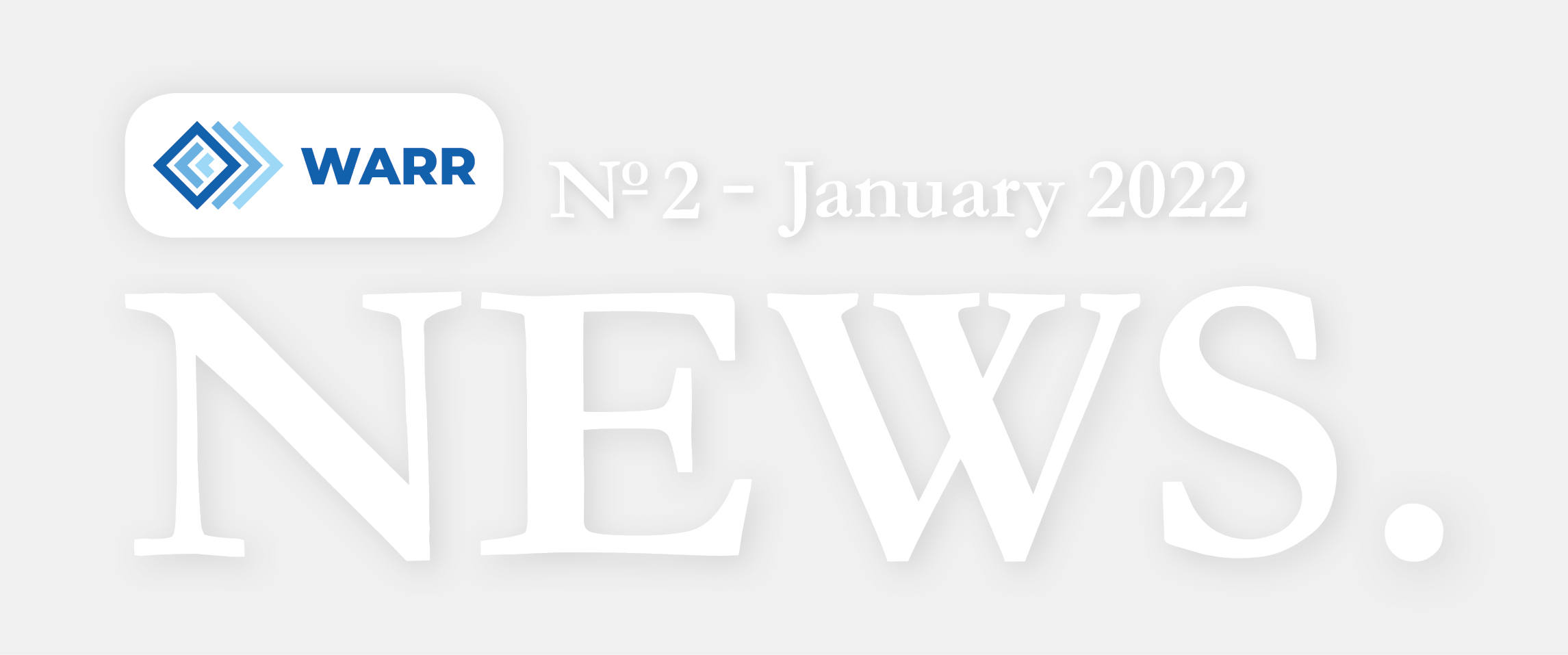
Es ist gerade erst Anfang Januar und schon ist unser Terminkalender für das Jahr 2022 berstend voll gepackt: Raketenstart & Raketenstart, 60-Jähriges (!) Jubiläum, großes Space Studentengruppentreffen bei uns in München, WARRnix Sommerfest, Ballonstarts, die European Space Elevator Challenge im Oktober, Jahreshauptversammlung, Start zur ISS und vieles vieles mehr.
Zeit, zu Beginn nochmal kurz Luft zu holen und in Erinnerungen an die vergangenen zwölf Monate zu schwelgen. Anbei finden Sie dazu eine kleine Zusammenfassung des Jahres 2021 in der WARR.
Highlights, Wettbewerbe, Meilensteine – ein Rückblick, erzählt aus der Sicht unserer fünf Teams.
WARR exploration
Wenn wir auf das vergangene Jahr zurückblicken, gibt es für uns von WARR exploration ein unangefochtenes Highlight.
Als Team, welches sich mit der Erkundung neuer fremder Welten beschäftigt, waren wir begeistert, zusammen mit 11 anderen Studententeams an IGLUNA 2021 teilzunehmen.
Nach vielen Design Reviews und zahllosen Tagen und Nächten, in denen wir in der Werkstatt Herzblut in jedes einzelne Teil unseres Rovers LARSS gesteckt haben, war endlich die Zeit für das Ereignis des Jahres gekommen.

Die IGLUNA 2021 Feldkampagne in Luzern bot den perfekten Rahmen, um endlich unseren hart erarbeiteten Rover auf die Probe zu stellen.
Die zehn Tage auf dem Gipfel des Berges Pilatus vergingen wie im Flug, als wir so mit Schwierigkeiten, wie dem bewölkten Wetter, kämpften aber auch unsere Erfolge feierten.
Nachdem wir uns also ausgiebig mit den anderen Teams ausgetauscht und eine Menge Daten über unser System gesammelt hatten, kehrten wir in die Sommerpause zurück, fest entschlossen, die Ergebnisse unserer Feldkampagne mitzunehmen und unser System damit in Zukunft zu verbessern.
Für einige unserer neueren Teammitglieder kam der große Testtag etwas später im Jahr.
Bei unserem ExoMy-Wettbewerb im November traten die drei Rover Rosarina, Picklejuice und Wagner gegeneinander an, wer es vermochte, die größte und gleichmäßigste Sandfläche zu kreieren. Studierende, die während des Sommersemesters zu unserem Team gestoßen sind, konnten diesen Rover-Wettbewerb als Gelegenheit nutzen, um verschiedene Technologien zur Verteilung von Sand zu demonstrieren.
Die Ergebnisse des Wettbewerbs werden uns helfen, ein ähnliches Payload für unseren großen Rover LARSS zu entwerfen.
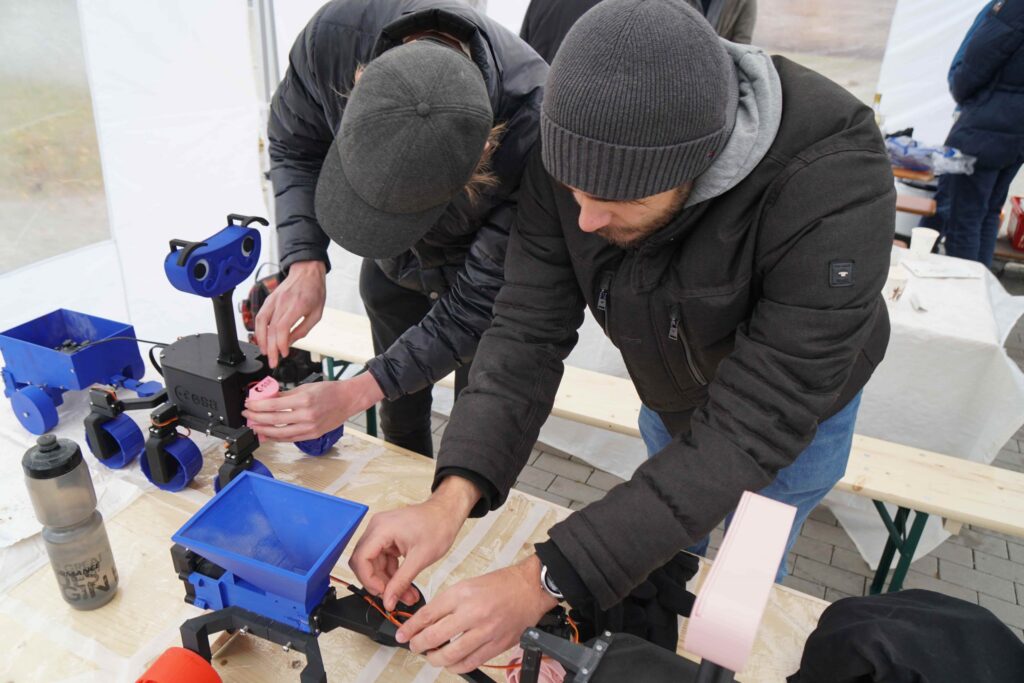
All diese frisch gesammelten Daten und die neuen Erfahrungen mit unseren Systemen werden uns in Zukunft gut beschäftigen, sodass wir weiterhin unsere vorherigen Rover-Design-Iterationen verbessern und neue Konzepte testen können.
WARR space labs
Das Team Space Labs hat es sich zum Ziel gesetzt, ein Experiment zu entwickeln, das die einzigartigen Bedingungen von Mikrogravitation für die Wissenschaft nutzt. Mit unserem Experiment “ADDONISS” konnten wir uns Anfang Dezember als eines der vier Gewinner Teams beim Überflieger 2 Wettbewerb der Deutschen Raumfahrtagentur DLR behaupten. Wir haben nun die einmalige Möglichkeit, unser Experiment auf die Internationale Raumstation (ISS) zu schicken.
Der Versuchsaufbau muss dafür in einen kleinen Quader mit einer Größe von 10 x 10 x 20 Zentimetern passen und voll automatisch ablaufen. Es darf also kein Eingriff eines Astronauten notwendig sein.
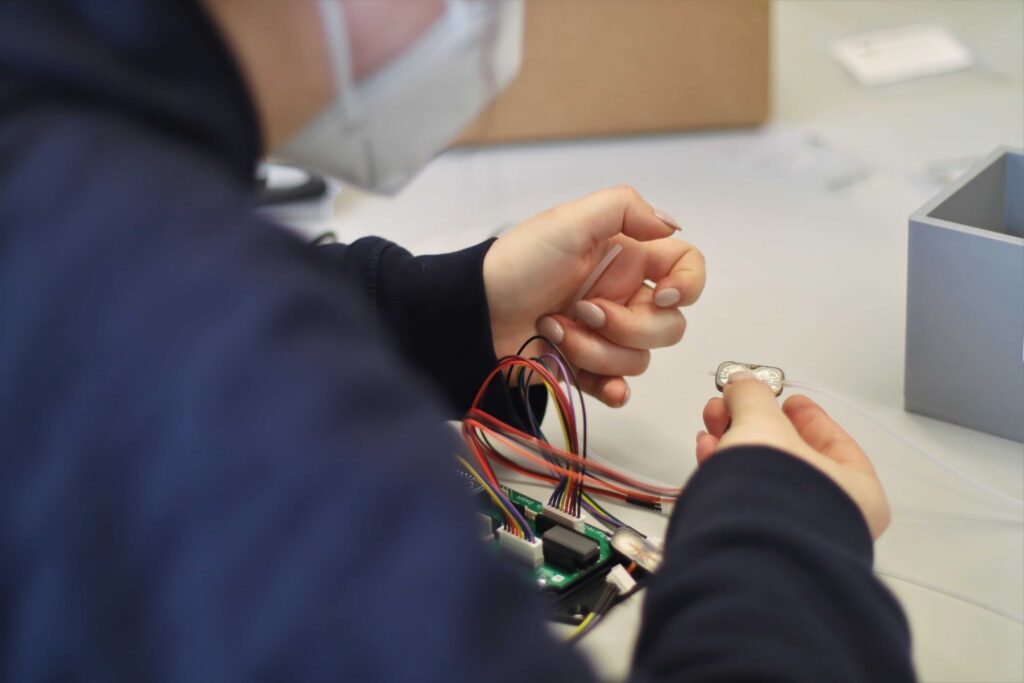
Aber wie wollen wir Mikrogravitation ausnutzen? Es ist bereits bekannt, dass bestimmte Alterungprozesse von Zellen in Mikrogravitation schneller ablaufen als auf der Erde. Damit bietet die ISS die optimale Umgebung, um degenerative Erkrankungen zu beobachten.
In unserem Experiment ADDONISS (Ageing and Degenerative Diseases of Neurons on the ISS) wollen wir uns das zunutze machen und den Einfluss von Mikrogravitation auf die Signalverarbeitung von Gehirnzellen untersuchen. Zusätzlich werden unsere insgesamt 6 Zellkulturen unter zwei verschiedenen Bedingungen wachsen: Einmal in normaler Nährflüssigkeit und einmal mit zugesetztem Beta-Amyloid Protein, welches unter anderem bei degenerativen Erkrankungen wie Alzheimer eine Rolle spielt.
Wir versprechen uns hiervon nicht nur einen einzigartigen Einblick in Alterungsprozesse in Mikrogravitation, sondern bieten gleichzeitig einen Modellaufbau, der in Zukunft möglicherweise zur Untersuchung von Medikamentenwirksamkeit genutzt werden kann.
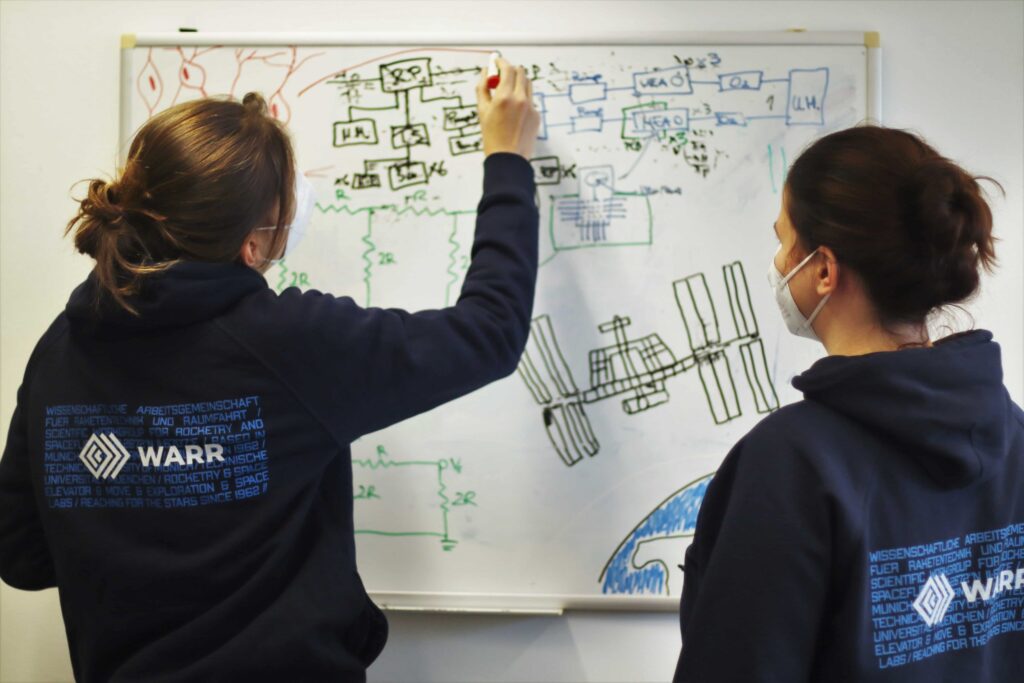
Nun haben wir ein Jahr Zeit, diesen Entwurf in die Tat umzusetzen. Ende 2022/Anfang 2023 wird das Experiment dann an Bord einer Trägerrakete auf die ISS gebracht und dort für einen Monat vollautomatisch betrieben. Als besonderes Highlight dürfen wir außerdem live vor Ort beim Raketenstart in den USA dabei sein! Team Space Labs darf sich also auf ein ereignisreiches Jahr 2022 freuen.
WARR move
2021 war ein sehr aufregendes und produktives Jahr für MOVE. Mit dem Start von nicht nur einem, sondern zwei stratosphärischen Ballons für unser aktuelles Projekt MOVE-III und die Feier des dritten Jubiläums des Starts unseres vorherigen Satelliten MOVE-II, hatten wir alle Hände voll zu tun.
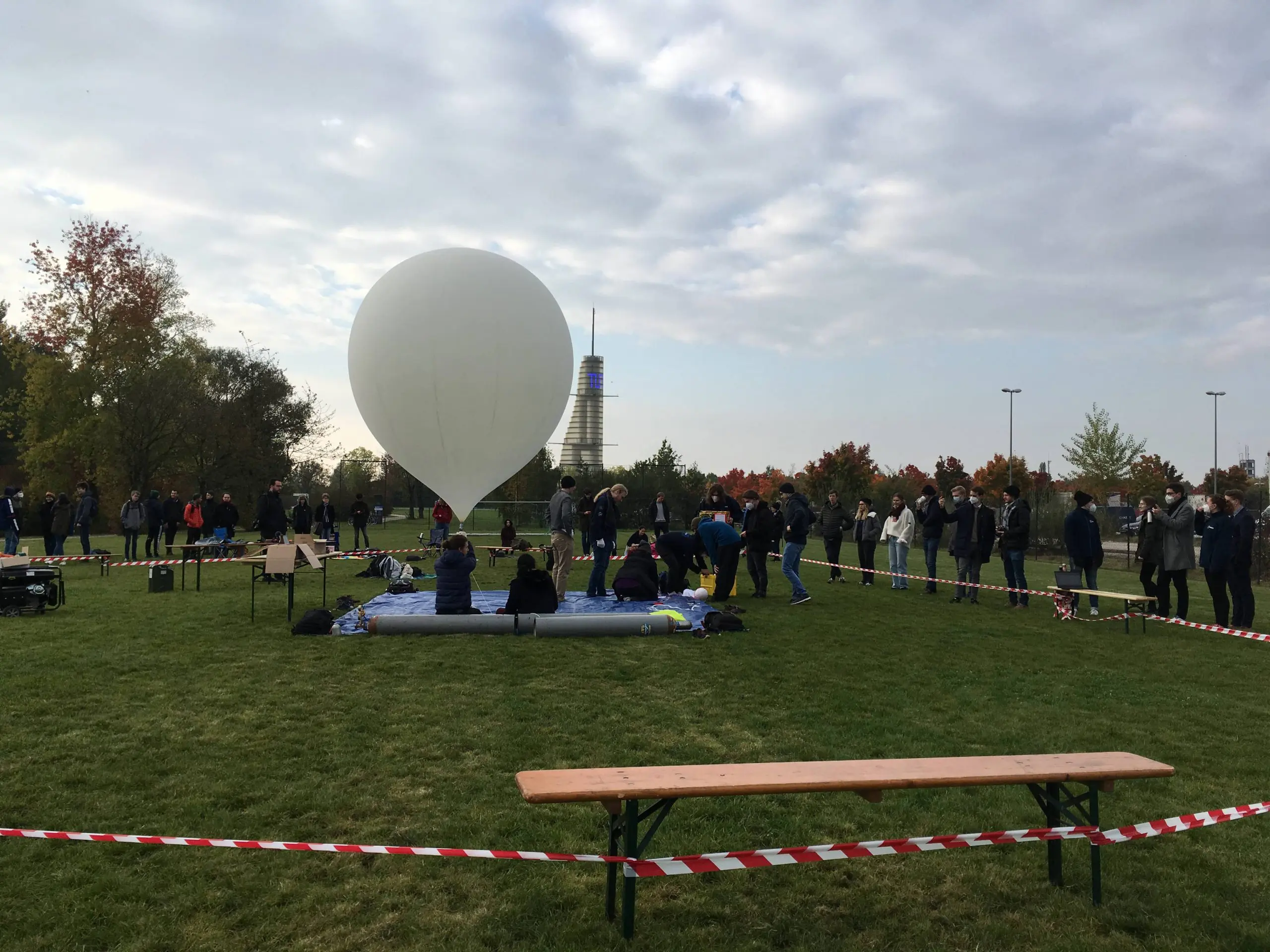
Im Juni hatten wir unseren ersten Ballonstart, bei dem wir zum ersten Mal Software, Elektrik und Mechanik zusammenstellten, die Leistung des Systems unter weltraumähnlichen Bedingungen testeten und natürlich unser Studententeam für die Integration ausbildeten. In weniger als einem halben Jahr ist es uns gelungen, unser System auf einem weiteren stratosphärischen Ballon zu fliegen und neue Hardware und Software zu testen.
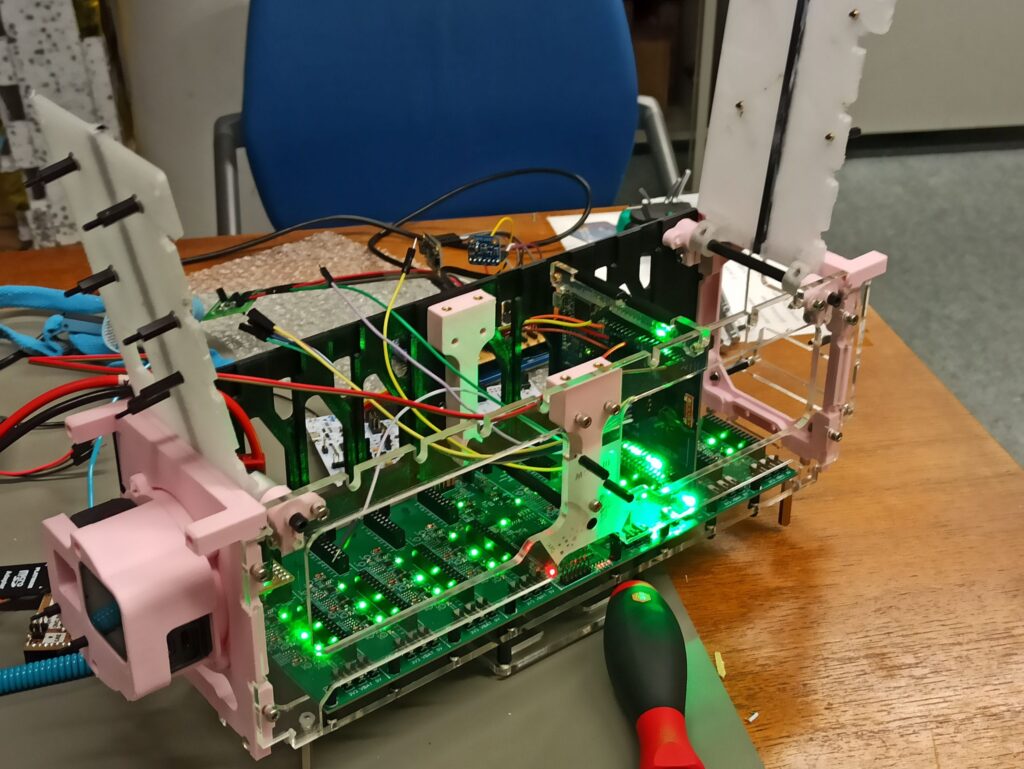
Zusätzlich zu den herkömmlichen Herausforderungen beim Satellitenbau musste unser Team in diesem Jahr auch unter den Einschränkungen der Pandemie arbeiten. Sei es unsere Home-DOSIS-Einrichtung, die einen Fernzugriff auf die Hardware ermöglicht, oder alle unsere Meetings, die online abgehalten werden, wir haben es geschafft, in nur 12 Monaten eine unglaubliche Menge an Arbeit zu erledigen.
Und was kommt als nächstes? Jetzt haben wir unseren dritten Ballonstart im Visier, bei dem wir die Hardware jedes Teilsystems fliegen werden, um unsere Designs zu validieren und die Fähigkeiten von MOVE-III noch weiter zu demonstrieren. Gleichzeitig arbeiten wir an unserem Preliminary Design Review, die ein weiterer Meilenstein für unser Projekt sein wird, da wir dann ein fertiges Konzept für das gesamte System haben werden.
Als MOVE-Team sind wir sehr zufrieden mit unseren Fortschritten im letzten Jahr und sehr gespannt auf das, was uns im nächsten Jahr erwartet!
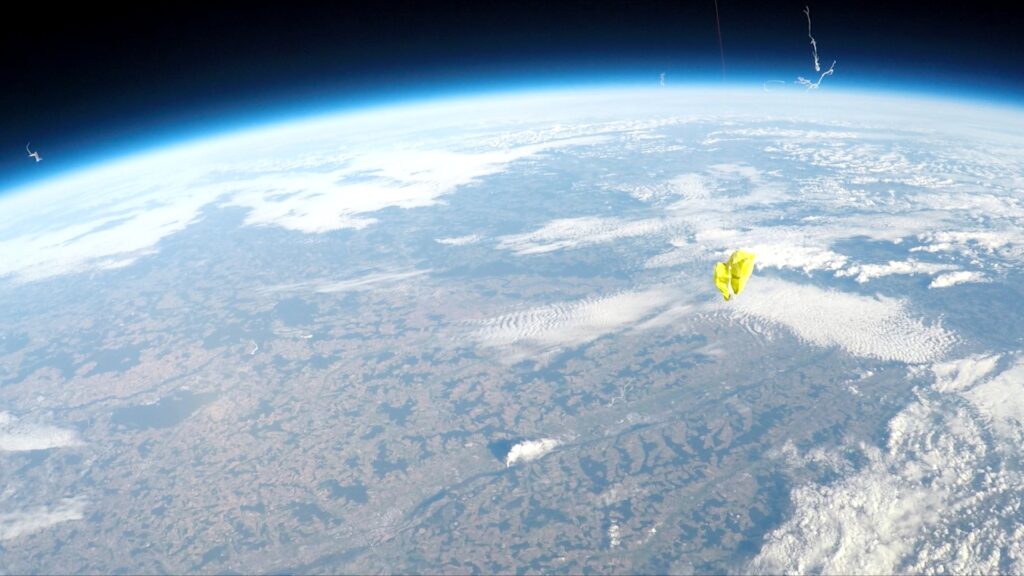
WARR space elevator
Das WARR space elevator Team beschäftigt sich mit der Konstruktion, der Fertigung und dem Testen eines selbstfahrenden Aufzuges, eines sogenannten „Climbers“.
Das Jahr 2021 war geprägt von der Integration neuer Studenten und Fertigung des Modelles „Graksler“. Das Ziel ist es einen 15kg schweren Climber zu bauen, der 100kg senkrecht heben kann. Aufgrund von Covid arbeiteten wir hauptsächlich an der Behebung von Fehlern und an der Konstruktion der neuen Graksler-Version. Fortschritte erzielten wir durch die Konstruktion und Fertigung zweier Prüfstände.
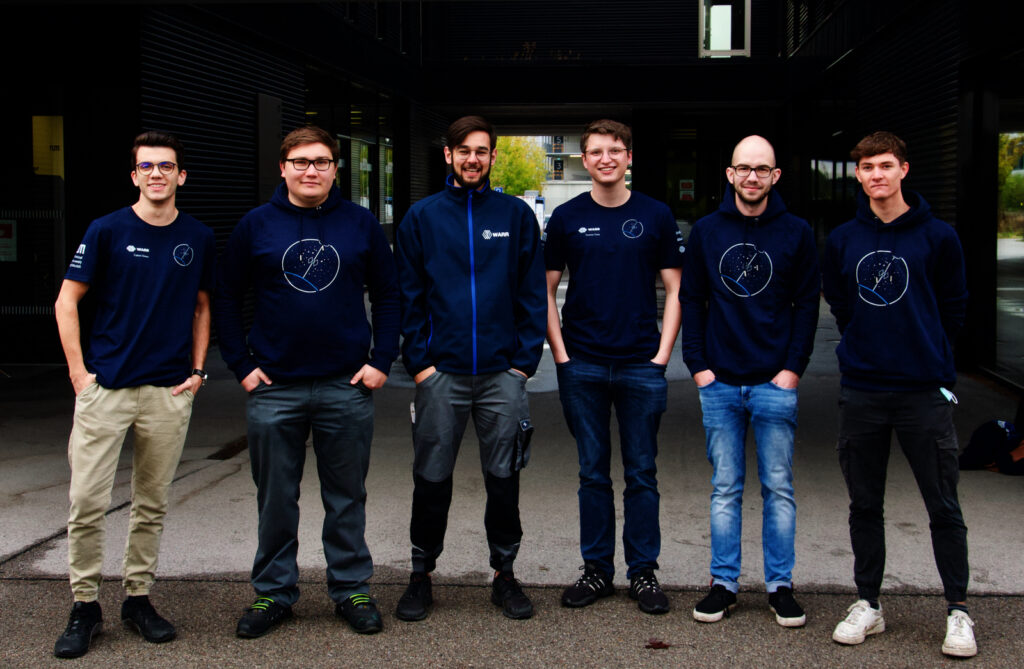
Zum Einen können jetzt die für die Struktur essentiellen CFK-Bauteile getestet werden, die durch die Zusammenarbeit mit dem Lehrstuhl für Carbon-Composites verbessert werden sollen.
Zum Anderen die Bremsen und der Motor, wobei dieser Prüfstand noch auf die Testung des Getriebes ausgeweitet werden soll. Des Weiteren wurde ein neuer Teilbereich für das Payloadmanagement gegründet, der sich mit dem Transport der Nutzlast auseinandersetzen wird.
Laut Wettbewerbsbedingungen handelt es sich hierbei um einen kleinen Rover, der durch den Climber transportiert und gesteuert werden soll. Dieser wird vom Controlling-Team neben der Programmierung des Bordcomputers entwickelt.
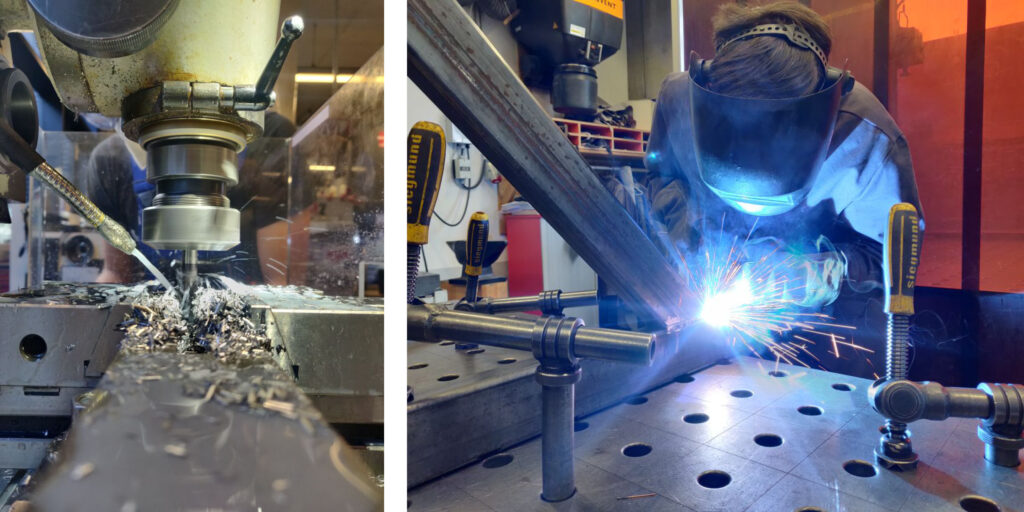
WARR rocketry
Es heißt, man soll mit einem Knall aufhören! Wobei wir hier bei Rocketry aber hoffen, dass das Einzige, was knallt, die Sektkorken nach einem gelungenen Start sind. Doch Zeit zu gehen ist es noch lange nicht, wir fangen gerade erst an!
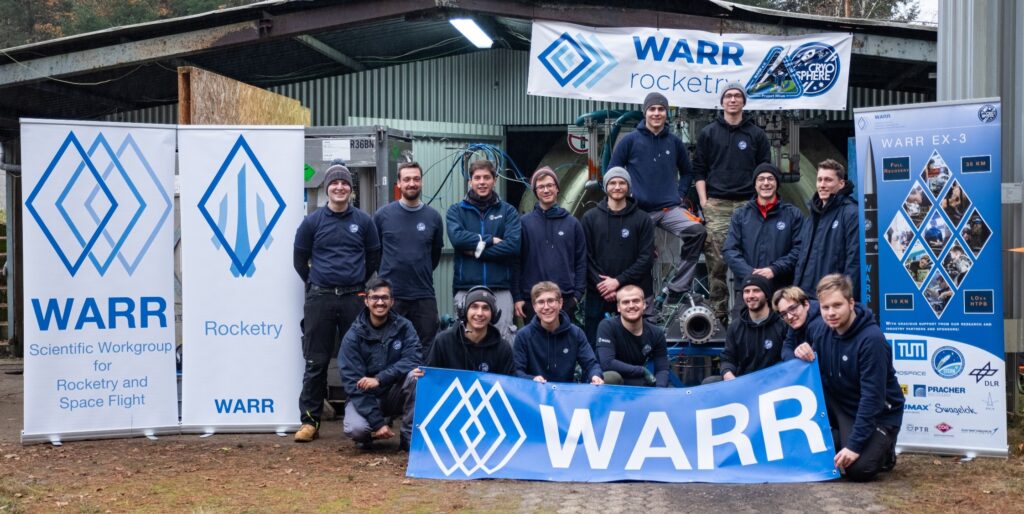
Momentan arbeiten wir an zwei spannenden Projekten.
Project Cryosphere, welches ursprünglich gestartet wurde, um erste Erfahrungen mit der Verwendung von Flüssigsauerstoff zu sammeln, steht inzwischen kurz vor der Start der EX-3 Rakete. Im vergangenen Jahr gipfelte unsere Arbeit mit Flüssigsauerstoff im Bau des 10 kN EX-3-Flugraketentriebwerks “Dreadnought” welches auf der Nutzung von Flüssigsauerstoff und HTPB basiert. Wir freuen uns, bekannt geben zu können, dass das Triebwerk, der Treibstoffeinsatz und das Flüssigkeitssystem die Bodenvalidierungstests in einer Reihe von statischen Feuertests erfolgreich abgeschlossen haben.
Die Testkampagne wurde im November 2021 beim DLR in Trauen durchgeführt und umfasste insgesamt 5 statische Feuertests. Mit dieser Kampagne wurde das Triebwerk in Originalgröße insgesamt 13 Mal gezündet, darunter 9 Tests mit dem Flugflüssigkeitssystem. Mit dieser Validierung gehen wir zuversichtlich in Richtung Start und arbeiten konsequent an der Fertigstellung und Flugqualifizierung der restlichen Elemente der Raketenstruktur, der Elektronik und der Bergungssysteme. Wenn die EX-3 endlich in den Himmel aufsteigt, wird sie voraussichtlich eine Höhe von 35 km erreichen und damit den europäischen Höhenrekord in der Amateur-Raketentechnik aufstellen.
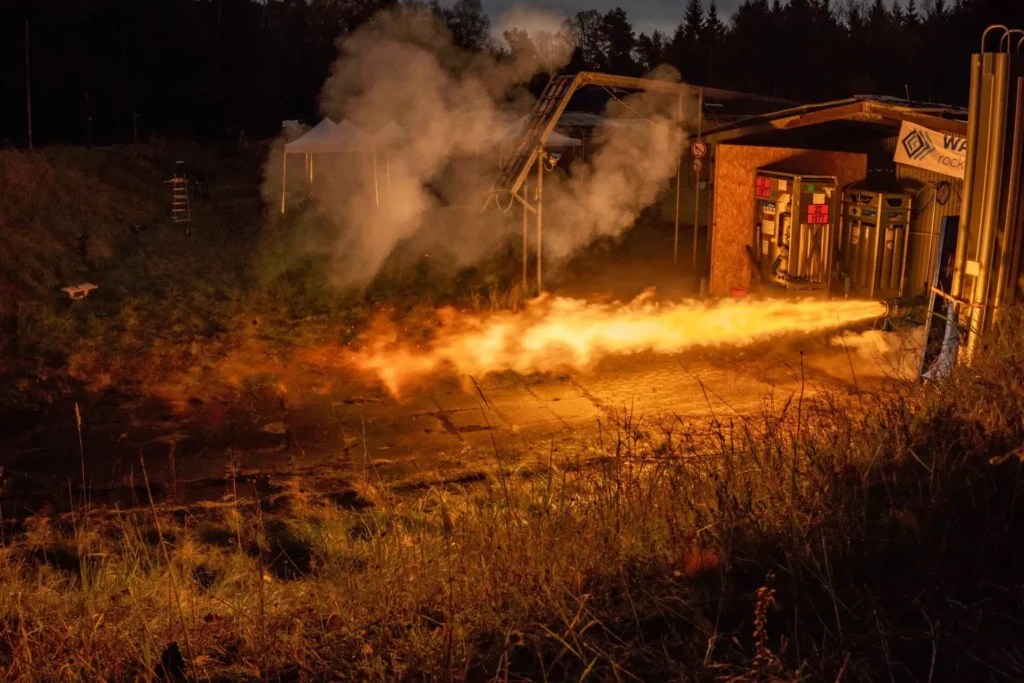
Project Nixus wurde im Winter 2019 ins Leben gerufen, um auf den in Projekt Cryosphere gewonnenen Erfahrungen mit kryogenen Treibstoffen aufzubauen und sich der Herausforderung eines Bi-Flüssigtreibstoff-Antriebs zu stellen.
Nach einer sehr erfolgreichen Rekrutierungsrunde im Herbst 2021 ist das Nixus-Team nun bereit, WARR rocketry in die schnelllebige Welt der Amateur- und Studetenraketenwettbewerbe zu führen. Ziel ist es, an der European Rocketry Challenge und dem Spaceport America Cup in der Kategorie 30K Hybrid/Liquid Rocket SRAD teilzunehmen und die Zielhöhe von dreißigtausend Fuß zu erreichen.
Angesichts der Tatsache, dass die Herstellung unseres Prüfstands gut vorankommt und die Fertigung unseres Testtriebwerks kurz vor dem Abschluss steht, wollen wir bald Verifizierungstests für alle Komponenten unseres neuen Systems durchführen. Da für Project Nixus auf dem Campus Garching getestet werden kann, wollen wir diese Tests in einer noch nie dagewesenen Häufigkeit durchführen.
Mit den durch cold flow und hot fire Tests gewonnenen Daten werden wir in der Lage sein, das Design unseres 3D-gedruckten, maßstabsgetreuen Triebwerks fertig zu stellen, dessen Kühlkanäle bereits die ersten Testdrucke durchlaufen. Während dieser Zeit hat auch die Flug-Hardware, von den Strukturen und der Aerodynamik bis hin zur Elektronik und dem Fluidsystem, mit ihrer Entwicklung begonnen, was den Teammitgliedern wichtige Einblicke in das Design einer solch komplexen Höhenforschungsrakete in all ihren Aspekten gibt.
Wir sind zuversichtlich, dass wir mit Hilfe sorgfältig geplanter Entwurfsprüfungen und einem besonderen Augenmerk auf das Teammanagement unsere Ziele erreichen und eine solide Grundlage für künftige größere Projekte wie die Überschreitung der Karman-Linie schaffen werden.
Bis dahin haben wir zwar noch einen langen Weg vor uns, doch wir sind bereit, jeden seiner Meter mit vollster Motivation zu beschreiten! Wie schwer kann das schon sein? After all, it’s not rocket science, is it?
